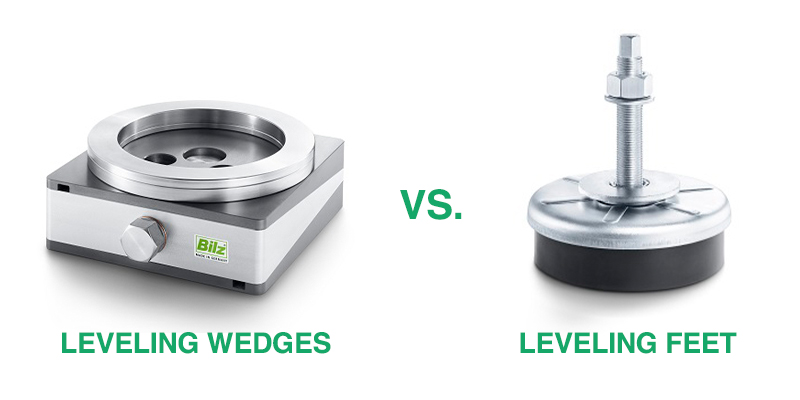

Leveling wedges vs. leveling feet is an age-old question we’re often asked by customers. From the isolation of a single press with isolation pads to active vibration isolation of highly sensitive equipment in the semiconductor industry, there is virtually no technical vibration problem that can’t be solved. So when your machine needs isolation efficiency, which do you choose?
There are many different issues to address depending on the machine and the application. For instance, with a stamping press, the rubber pads under the feet absorb energy from the machine traveling downward and stamping the part. The machining center with high speed spindle is cutting metal, so you need vibration isolation to help dampen the higher frequencies that are affecting the surface finish of the machining.
Even with the most accurate and well-made machines you will not be able to produce accurate work if the machine is not properly leveled. If you picture a long bed CNC lathe, the weight of the lathe causes the bed to be twisted, throwing the headstock and tailstock out of alignment due to uneven surface of the floor. As the carriage holding the cutting tool moves down the length of the workpiece the twist in the bed will prevent the lathe from holding the dimensions needed to produce the part. That’s the leveling part. If you have vibrations while you’re cutting it won’t maintain the surface quality of the part. Presses that go up and down, if not properly leveled, like hydraulic presses, can wear out their seals. Mechanical presses can wear out their slides, prematurely.
So what solution should you choose with such a wide range of potential solutions? This blog will focus on the differences in application for leveling wedges and leveling feet. We’ll outline some pros and cons to help you decide which is the best solution for your specific need.
There are loads of wedge and feet options for leveling heavy machinery. Do you need more advice on leveling wedges vs. leveling feet? With over 35 years combined experience in the industry, the team at Bilz USA can help you find a solution.
Fill out this form to speak to an expert engineer about your specific leveling needs.